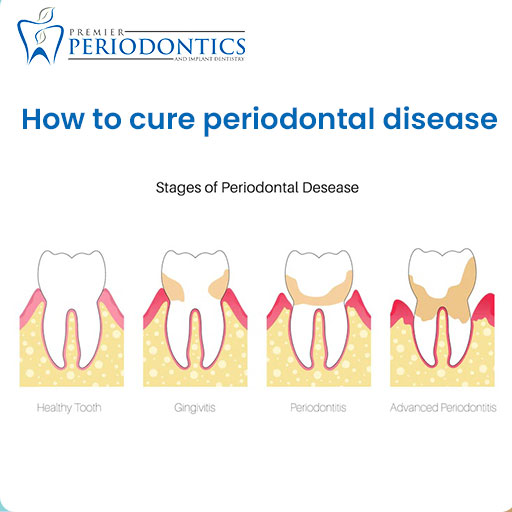An extremely serious gum infection is called periodontitis.
Bacteria that have been permitted to build up on your teeth and gums are to blame. Your bones and teeth may suffer harm when periodontitis worsens. However, the damage can be halted if periodontitis is treated quickly and good oral hygiene is maintained.

1.NonSurgical treatments
Treatment options for periodontitis may include less invasive treatments, like as
- Tartar and bacteria are removed from tooth surfaces and the gum line during scaling. Instruments, a laser, or an ultrasonic device may be used to execute it.
- Root planing eliminates bacterial byproducts that cause irritation, impede healing, or cause the gums to reattach to the tooth surfaces while smoothing the root surfaces to prevent additional tartar and bacterial accumulation.
- Topical or oral antibiotics can help control bacterial infection. Topical antibiotics include antibiotic mouthwashes and antibiotic gels that are inserted into pockets or the gap between your teeth and gums following extensive cleaning. However, oral antibiotics may be necessary to completely eliminate infection-causing bacteria.
2. Surgical treatments
If you have advanced periodontitis, therapy may need dental surgery, such as
- In order to peel back a portion of gum tissue and expose the roots for more efficient scaling and root planing, your periodontist makes a series of small incisions in your gum. The underlying bone may need to be recontoured before the gum tissue is sutured back into place since periodontitis frequently results in bone loss. Cleaning these regions and maintaining healthy gum tissue is simpler when you recuperate.
- Your gumline recedes as a result of gum tissue loss. Some of the soft tissue injuries may require reinforcement. This is often accomplished by taking a little quantity of tissue from the palate, a donor location, or both, and attaching it to the afflicted area. This can conceal exposed roots, slow down future gum recession, and improve the aesthetics of your teeth.
- When periodontitis has damaged the bone supporting your tooth root, this surgery is carried out. Small pieces of your own bone, synthetic bone, or bone from a donation may be used for the transplant. By supporting your tooth, the bone transplant prevents tooth loss. It acts as a foundation for the formation of normal bone again.
- This enables bone that was damaged by germs to regenerate. One method involves your dentist sandwiching a particular piece of biocompatible fabric between your tooth and the bone that already supports it. The substance keeps undesirable tissue out of the region that is mending, enabling bone to regrow there in its place.
- Another approach is covering a diseased tooth root with a certain substance. The same proteins found in tooth enamel formation are present in this gel, which promotes the growth of healthy bone and tissue.
Best Periodontist in Langhorne PA https://premierperiodontics.com/ or call us at (267) 908-4867.









